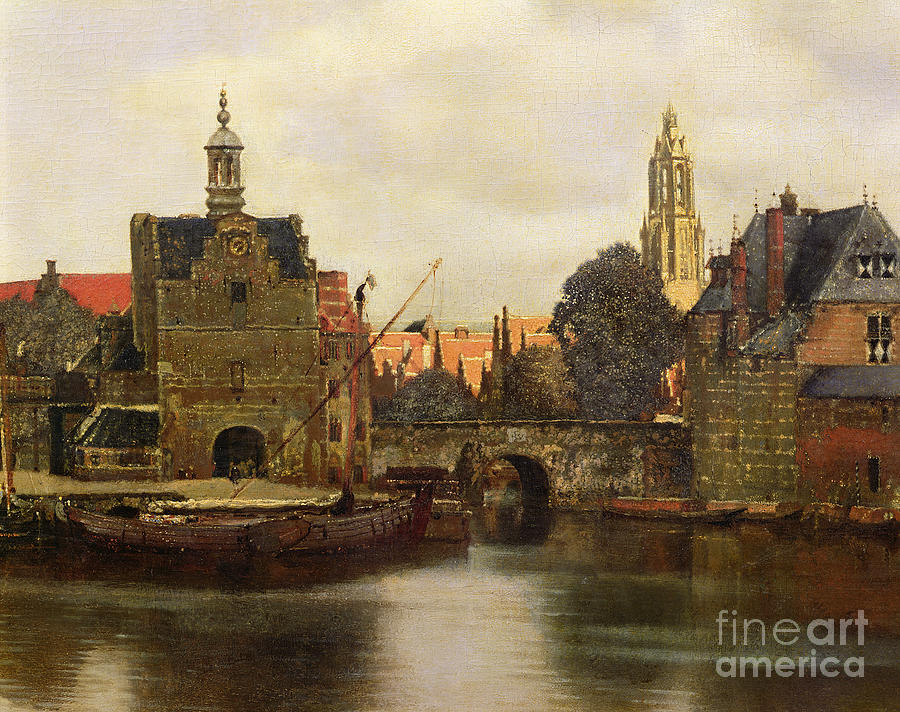
View Of Delft Painting by Jan Vermeer
View of Delft, 1660 by Johannes Vermeer. Vermeer has depicted Delft from across its harbor, where transport boats would unload after navigating inland waterways from the ports of Rotterdam and Schiedam. Beyond the frieze of Delft's protective walls and massive gates, which Vermeer cast in shadow to suggest their age and venerability, the inner.
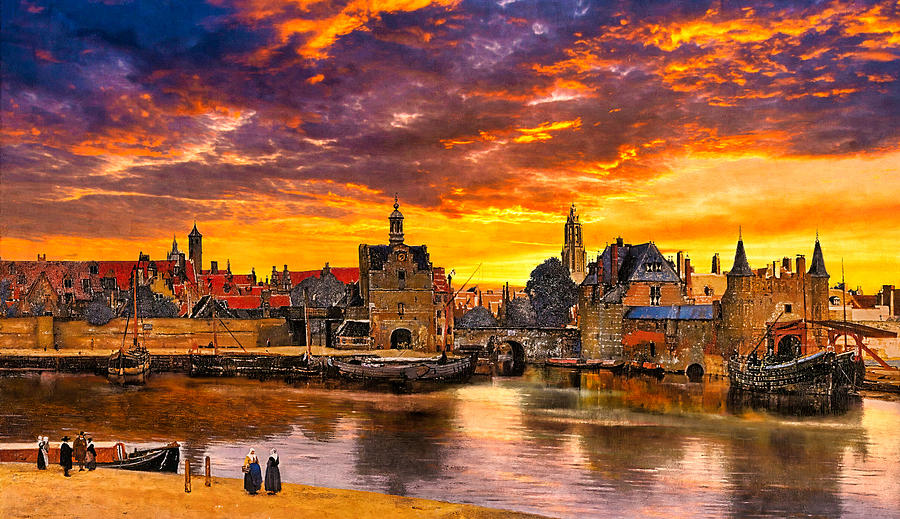
View of Delft by Johannes Vermeer, with a sunrise sky cropped version Digital Art by Nicko
View of Delft ( Dutch: Gezicht op Delft) is an oil painting by Johannes Vermeer, painted c. 1659-1661. The painting of the Dutch artist's hometown is among his best known. [1] It is one of three known paintings of Delft by Vermeer, along with The Little Street and the lost painting House Standing in Delft, [2] and his only cityscape. [3]
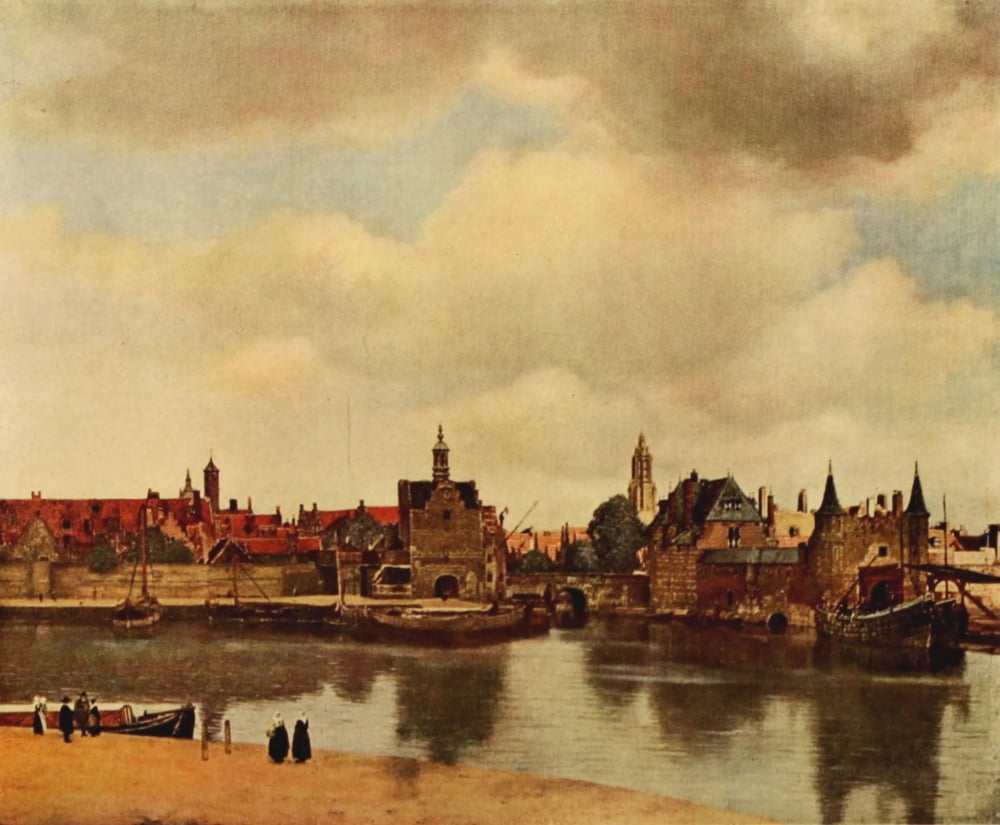
View of Delft Vermeer 1937 Poster Print by Johannes Vermeer
Johannes Vermeer (/ v ər ˈ m ɪər, v ər ˈ m ɛər /, Dutch: [vərˈmeːr], see below; also known as Jan Vermeer; October 1632 - 15 December 1675) was a Dutch Baroque Period painter who specialized in domestic interior scenes of middle-class life. He is considered one of the greatest painters of the Dutch Golden Age along with Rembrandt.During his lifetime, he was a moderately successful.
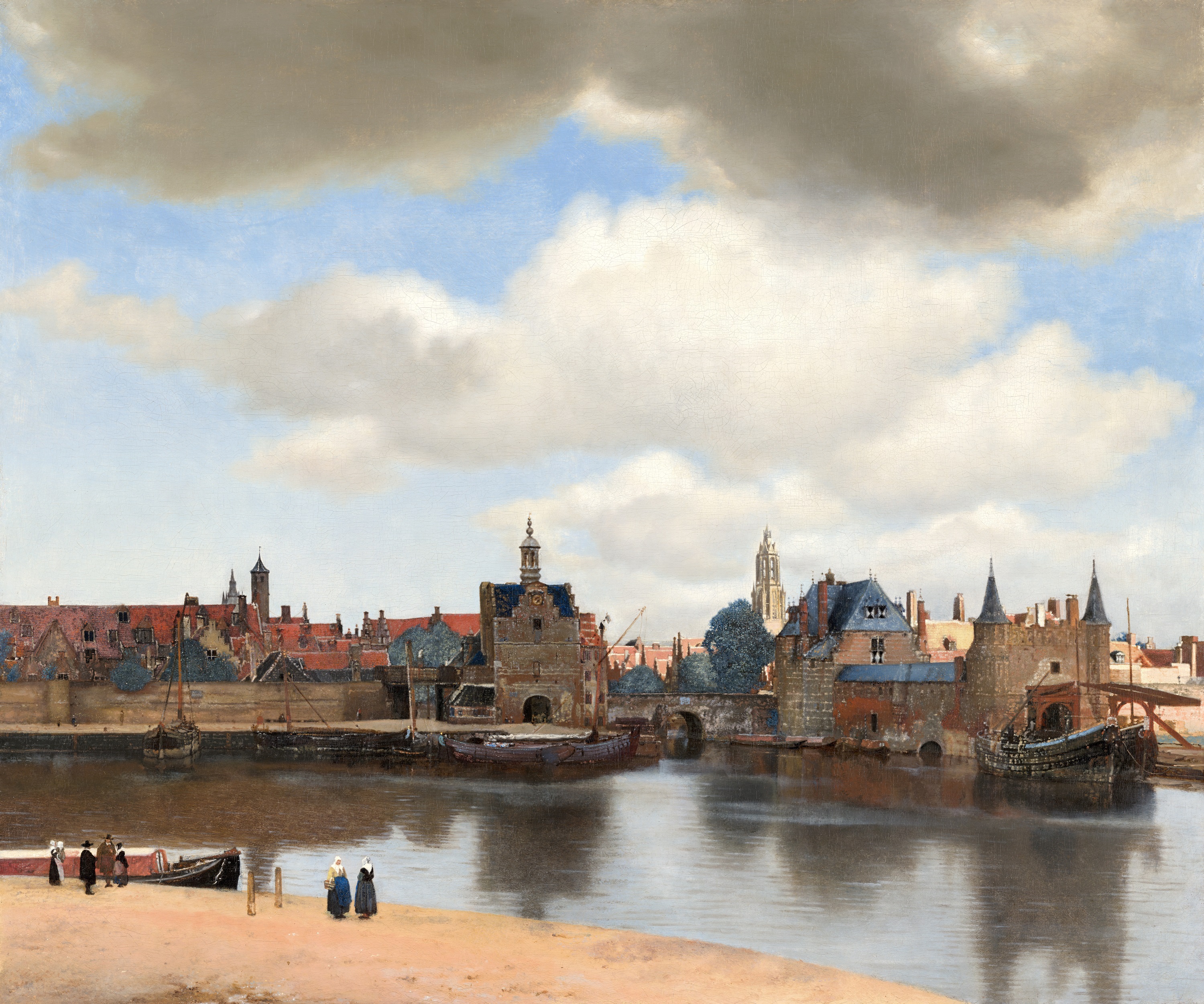
Vue de Delft de Johannes Vermeer
View of Delft is an oil painting by Johannes Vermeer, painted c. 1659-1661. The painting of the Dutch artist's hometown is among his best known. It is one of three known paintings of Delft by Vermeer, along with The Little Street and the lost painting House Standing in Delft, and his only cityscape. According to art historian Emma Barker, cityscapes across water, which were popular in the.
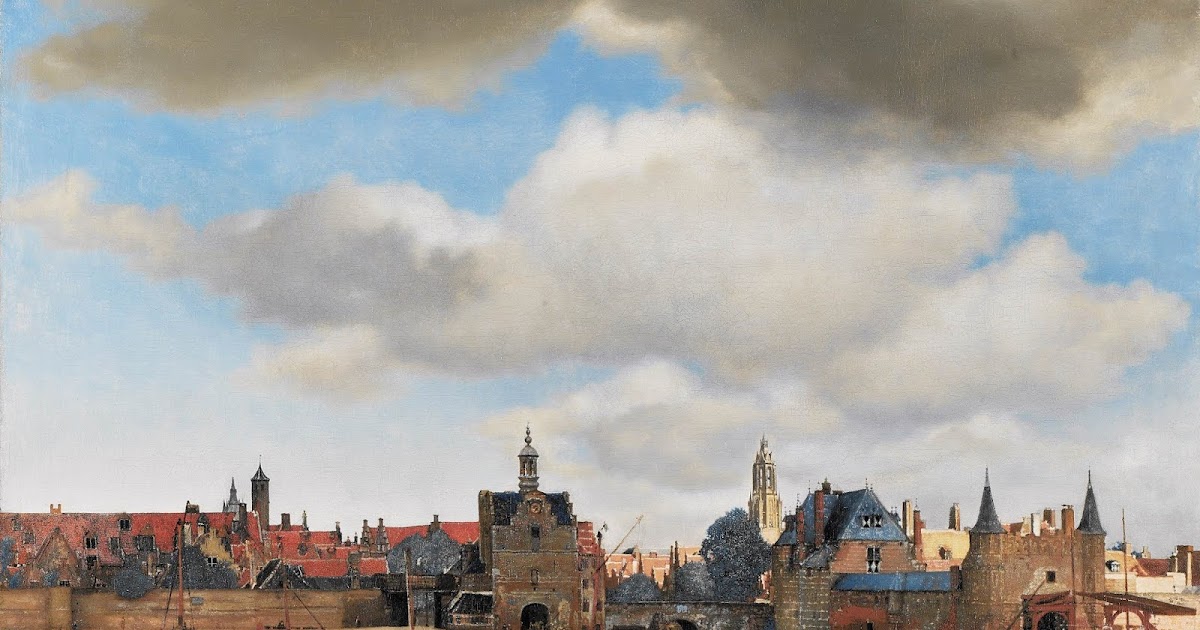
View of Delft by Johannes Vermeer (Interpretation and Analysis)
Johannes Vermeer. View of Delft is a painting of Vermeer's hometown and is among his most valued works. It is even regarded by some as the most distinguished cityscape of 17th-century Dutch art. Vermeer produced this canvas at a time when cityscapes were not particularly common and it is one of three snapshots of Delft that he painted, along.

View of Delft Johannes Vermeer greatest paintings
View of Delft - Vermeer, Johannes (4706x3929).jpg . View of Delft - Vermeer, Johannes (588x491).jpg . View of Delft - Vermeer, Johannes (9412x7858).jpg . remove-circle Share or Embed This Item. Share to Twitter. Share to Facebook. Share to Reddit. Share to Tumblr. Share to Pinterest.
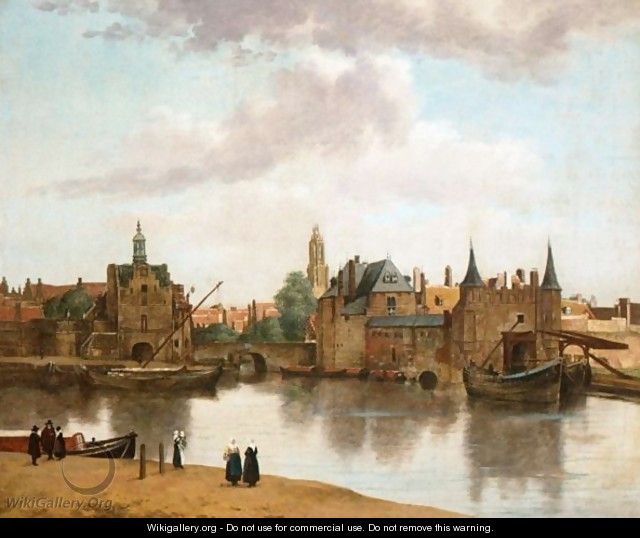
View Of Delft (after) Johannes Vermeer the largest gallery in the world
View of Delft (Dutch: Gezicht op Delft) is an oil painting by Johannes Vermeer, painted ca. 1660-1661.The painting of the Dutch artist's hometown is among his most popular, painted at a time when cityscapes were uncommon. It is one of three known paintings of Delft by Vermeer, along with The Little Street and the lost painting House Standing in Delft.
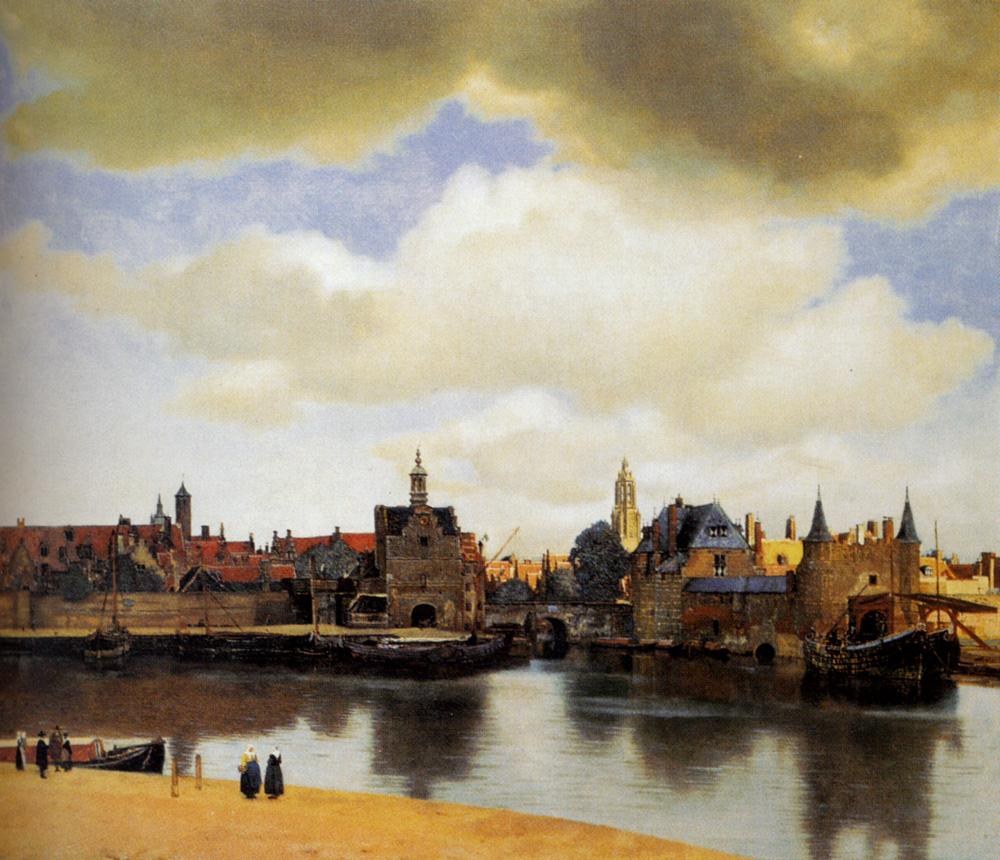
Johannes Vermeer View Of Delft Painting Best Paintings For Sale
In Johannes Vermeer: Themes.emotional power of Vermeer's magnificent View of Delft (c. 1660-61) similarly results from his ability to transform an image of the physical world into a harmonious, timeless visual expression. In this masterpiece Vermeer depicted Delft from across its harbour, where transport boats would unload after navigating inland waterways.

View of Delft Painting by Johannes Vermeer Pixels
Johannes VermeerView of Delft. c. 1660-1661 On view in Room 15. This is the most famous cityscape of the Dutch seventeenth century. The interplay of light and shade, the impressive cloudy sky and the subtle reflections in the water make this painting an absolute masterpiece. We are looking at Delft from the south.

Damn Fine Art Johannes Vermeer. View of Delft (‘Gezicht op Delft’), ca. 1661 (Mauritshuis, The
Johannes Vermeer, View of Delft, c. 1660 - 1661 Sphinx of Delft. Thoré the art critic called Vermeer 'The Sphinx of Delft', because so little was known about him in the 19th century. Vermeer is still a mysterious figure in art history, and researchers are still very interested in the way he worked. He deliberately left out some details you.
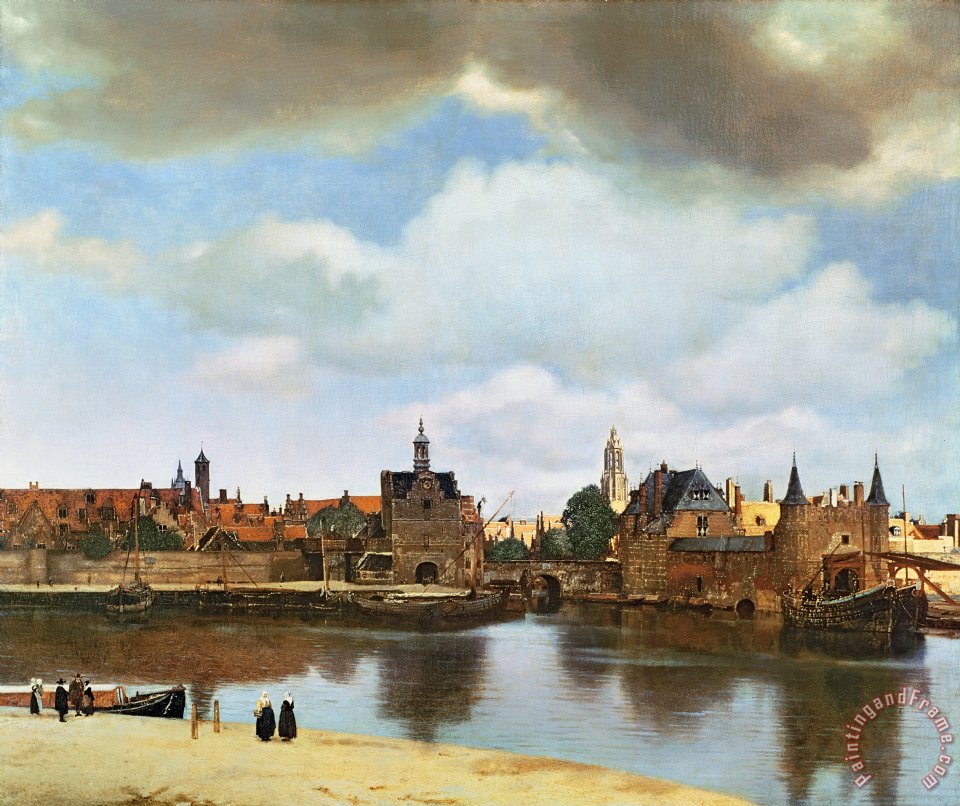
Jan Vermeer View of Delft painting View of Delft print for sale
c. 1660-1663. In the View of Delft, Vermeer's largest canvas, the artist continues to explore visual effects produced the camera obscura, a precursor of modern camera. These effects can be first noted in the Girl Reading a Letter at an Open Window and became obvious in Officer and Laughing Girl and The Milkmaid.
A Place Called Space View of Delft, by Johannes Vermeer
This is the most famous cityscape of the Dutch Golden Age. The interplay of light and shade, the impressive cloudy sky and the subtle reflections in the.

Johannes Vermeer Blog Vermeer painting View of Delft (1658)
The few famous exceptions to his interior scenes include The Little Street (Rijksmuseum, Amsterdam), View of Delft (Mauritshuis, The Hague),. and Arthur K. Wheelock, Jr. Johannes Vermeer. Exhibition catalogue. New Haven: Yale University Press, 1995. Franits, Wayne E. Paragons of Virtue: Women and Domesticity in Seventeenth-Century Dutch Art.

View of Delft A Painting by Johannes Vermeer Literary Fictions
View of Houses in Delft, Known as 'The Little Street', Johannes Vermeer, c. 1658 oil on canvas, h 54.3cm × w 44cm × d 9cm More details. This is an unusual painting in Vermeer's oeuvre, and remarkable for its time as a portrait of ordinary houses.. Johannes Vermeer van Delft, 1632-1675, Albert Blankert, Robert Ruurs, Willem L. van de.
A Place Called Space View of Delft, by Johannes Vermeer
Mauritshuis. View of Delft (c. 1660 - 1661) by Vermeer, Johannes Mauritshuis. We really know very little about Johannes Vermeer, which explains why he is also sometimes referred to as the Sphinx of Delft. But we do know some details about his life: that he was born in Delft, for example, and that he lived there all his life.
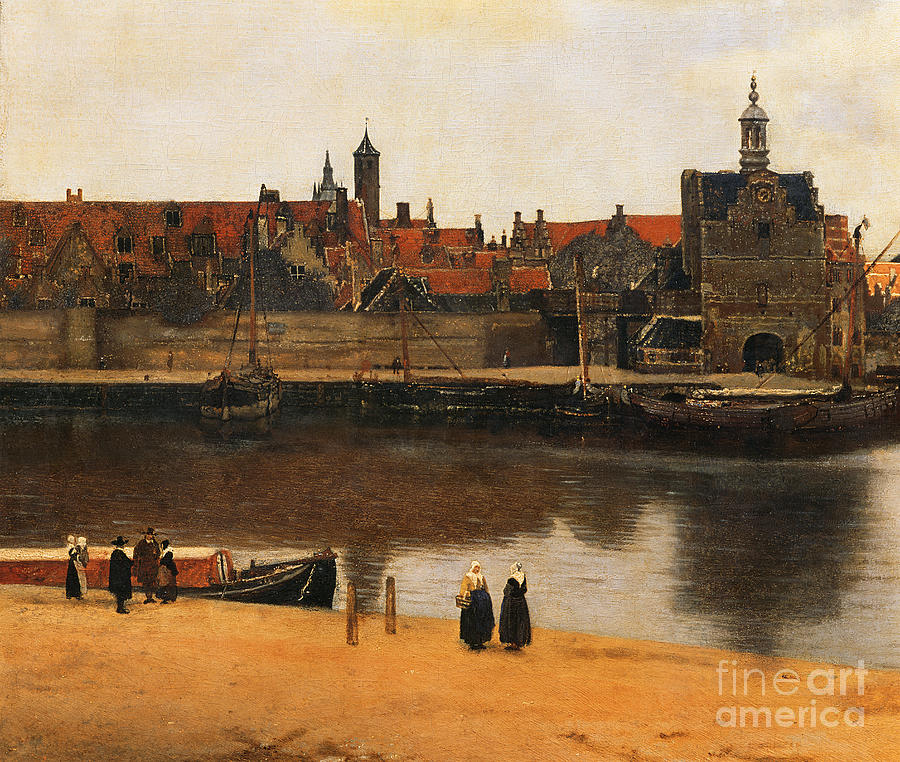
View of Delft by Vermeer Painting by Jan Vermeer Pixels
View of Delft Johannes Vermeer c. 1660 - 1661. Mauritshuis Den Haag, Netherlands. This is the most famous cityscape of the Dutch Golden Age. The interplay of light and shade, the impressive cloudy sky and the subtle reflections in the water make this painting an absolute masterpiece.